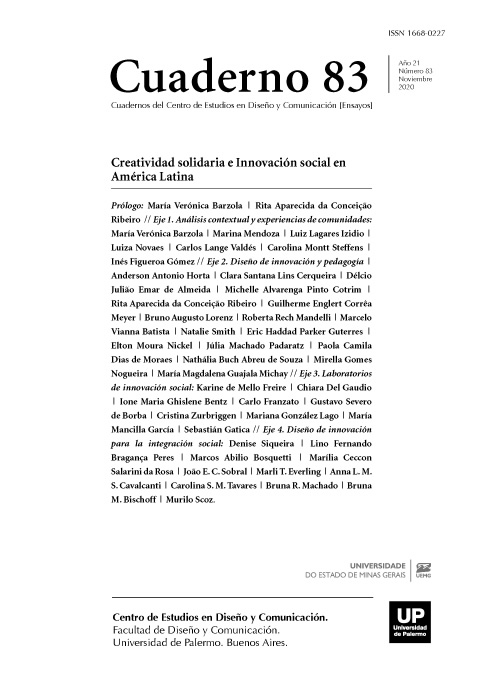Possibilidades da Tecnologia Touchscreen para desenvolvimento motor e inclusão digital de pessoas com Paralisia Cerebral
Abstract
This article aims to investigate the possibilities of touchscreen devices for motor stimulation of people with Cerebral Palsy (PC) in order to contribute to the accessibility of design objects to the greatest number of users according to the premise of Universal Design. The methodological procedures employed were a literature review on touchscreen technologies and therapies for people with Cerebral Palsy and semi-structured interviews with professionals in the area of physiatry, physiotherapy, speech therapy, occupational therapy and physical education who work in Centro Catarinense de Reabilitação (CCR) of Florianópolis, Santa Catarina, in Brazil, and have experience attending CP patients. By observing the aspects analyzed, it was concluded that touchscreen devices, with the due improvements, can be a tool in the rehabilitation process, since it enables a superior variety of manual movements than other devices of assistive technology. The size and interface of touchscreens are some of the major obstacles identified in the use of this technology by Cerebral Palsy patients. Therefore, it is relevant, in the field of Universal Design, to explore the intersection between the levels of motor involvement of people with CP and the possible gestures on the screens, so as to contribute to the advancement of digital accessibility not only to people with this neurological dysfunction but also several correlated motor impairments.
References
Bassani, P.; Behar, P.; Heidrich, R.; Bittencourt, A. & Ortiz, E. (2010). Usabilidade e acessibilidade no desenvolvimento de interfaces para ambientes de educação à distância. Revista Novas Tecnologias Na Educação, 8(1). http://dx.doi.org/10.22456/1679-1916.15180
Carletto, A. & Cambiaghi, S. (2018). Desenho Universal: um conceito para todos. São Paulo.
Manzini, E. & Deliberato, D. (2006). Portal de ajudas técnicas para educação: equipamento e material pedagógico especial para educação, capacitação e recreação da pessoa com deficiência física: recursos para comunicação alternativa (2nd ed.). Brasília: MEC, SEESP.
Ministério da Saúde (2014). Diretrizes de atenção à pessoa com paralisia cerebral. Brasília: Ministério da Saúde.
Ribeiro, J. (2014). Heurísticas para avaliação da interação com aplicações (apps) de gráficos em dispositivos móveis touchscreen (Mestre). Universidade de Lisboa.
Simões, J. & Bispo, R. (2006). Design inclusivo. Lisboa: Centro Português de Design.
Surveillance of Cerebral Palsy in Europe. (2017). SCPE. Retrieved 8 September 2017, from http://www.scpenetwork.eu/pt/my-scpe/manual-de-referencia-e-formacao/pc-esubtipos-de-pc/
World Health Organization, The World Bank (2012). Relatório mundial sobre a deficiência. São Paulo: SEDPcD.
Los autores/as que publiquen en esta revista ceden los derechos de autor y de publicación a "Cuadernos del Centro de Estudios de Diseño y Comunicación", Aceptando el registro de su trabajo bajo una licencia de atribución de Creative Commons, que permite a terceros utilizar lo publicado siempre que de el crédito pertinente a los autores y a esta revista.


